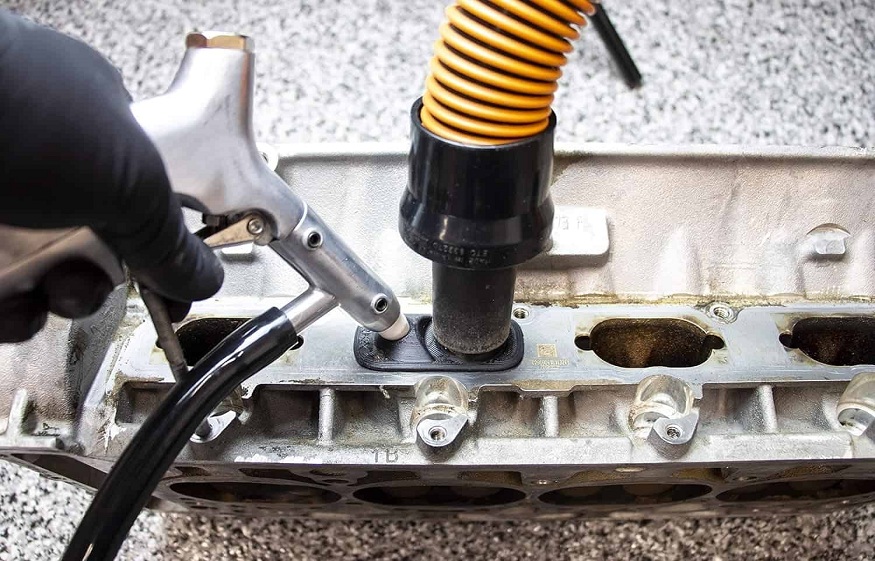Cleaning carbon deposits from engine valves is a necessary maintenance task that ensures the optimal performance and longevity of your engine. Carbon buildup on the valves can cause poor engine performance, increased emissions, and potential damage if left unchecked. While traditionally, cleaning the carbon off the valves would require removing the cylinder head, there are methods that allow you to clean the valves without disassembling the engine. In this article, we will explore how to clean carbon off valves without removing the head, providing you with an efficient solution for maintaining your engine.
Understanding Carbon Buildup on Engine Valves
Before delving into the methods for cleaning carbon off the valves, it’s essential to understand why carbon buildup occurs in the first place. During the combustion process, fuel and air mixture enters the cylinder, where it is compressed and ignited to create power. However, not all the fuel completely burns off during combustion. The leftover carbon particles attach to the surface of the valves and other components, especially in the intake valves. Over time, this accumulation of carbon creates a layer of deposits that can affect engine performance.
If not addressed, carbon buildup can lead to several engine issues, including rough idle, poor fuel efficiency, misfires, and difficulty starting the engine. In extreme cases, it can cause the valves to stick, leading to more significant mechanical problems. The good news is that it’s possible to clean these carbon deposits without having to remove the cylinder head, saving time and money while keeping the engine running smoothly.
Cleaning Methods for Removing Carbon Off Valves Without Removing the Head
There are several methods available to clean carbon off the valves without removing the head. Each of these techniques is designed to break down or loosen the carbon deposits so they can be removed through regular engine operation or through a cleaning process. Below are some of the most common methods.
Using Fuel Additives
Fuel additives are one of the easiest and most convenient methods to clean carbon off the valves without taking the engine apart. These additives are designed to break down carbon deposits as they pass through the engine. There are several fuel system cleaners available that specifically target carbon buildup on the intake valves. By adding these cleaning agents to your gas tank, you can allow the engine to burn the additives along with the fuel, helping to clean the valves during normal operation.
To use a fuel additive, simply follow the instructions on the bottle, as each product may vary. Typically, you’ll need to add the cleaner to a nearly empty fuel tank, then fill the tank with fuel. As you drive, the additive will mix with the fuel and work its way through the fuel injectors and combustion chambers. While this method can take time to show results, it’s a relatively inexpensive and straightforward way to remove carbon deposits without needing to remove the head.
Using Seafoam or Similar Products
Another popular product for cleaning carbon off valves is Seafoam. Seafoam is a cleaning product that is commonly used for carbon cleaning on a variety of engine parts, including the intake valves. Unlike fuel additives, Seafoam is applied directly to the intake system, allowing it to clean the valves more effectively. This method is known as the “intake cleaner method.”
To use Seafoam, you will need to pour it into the vacuum hose or intake manifold while the engine is running. This allows the Seafoam to be drawn into the engine, where it will clean the valves, combustion chambers, and other components. The carbon deposits break down as the Seafoam mixes with the fuel and burns off during normal combustion.
It’s essential to use Seafoam or any similar product carefully, as applying too much too quickly can flood the engine. Always refer to the product’s instructions and apply it gradually to avoid potential damage. While this method is relatively simple, it can take some time to see noticeable improvements. Repeating the process every few thousand miles can help keep carbon buildup at bay.
Walnut Blasting
Walnut blasting is an effective technique for cleaning carbon off valves without removing the cylinder head. This method involves using crushed walnut shells, which are shot at high velocity into the intake system to dislodge carbon deposits. The walnut shells are soft enough to avoid damaging engine components but strong enough to break up carbon buildup.
To perform walnut blasting, specialized equipment is required, and the process is typically performed by a professional mechanic or at an automotive repair shop. During the process, the walnut shells are directed into the intake manifold, where they are drawn into the intake valves. The shells chip away at the carbon deposits, and the dislodged carbon particles are then vacuumed out. This technique can be highly effective, but it requires the right tools and experience to perform safely and efficiently.
Walnut blasting is often used as a last resort when other methods, such as fuel additives and Seafoam, haven’t been effective at cleaning carbon off the valves. While it’s an effective way to remove stubborn buildup, the process can be costly, especially if performed at a shop, due to the specialized equipment and labor involved.
Manual Cleaning Using a Valve Cleaning Kit
For those who are comfortable working on their vehicle, manual cleaning using a valve cleaning kit is another option. A valve cleaning kit typically includes specialized brushes, cleaning solutions, and tools that allow you to clean the intake valves directly without removing the cylinder head. This method involves accessing the intake valves through the intake manifold, where you can scrub away the carbon buildup.
While manual cleaning is more time-consuming and requires a certain level of mechanical skill, it can be an effective way to remove carbon deposits without removing the head. The key to success with this method is ensuring that you have the right tools and approach so as not to damage the engine. If you’re not confident in your ability to clean the valves manually, it’s best to leave this task to a professional mechanic.
Why You Should Consider Cleaning Carbon Off Valves Without Removing the Head
Cleaning carbon off the valves is an important maintenance task that can improve your engine’s efficiency and prevent costly repairs. By avoiding the need to remove the cylinder head, you can save a significant amount of time and money. Methods like fuel additives, Seafoam, walnut blasting, and manual cleaning all offer effective solutions for removing carbon deposits without disassembling the engine.
Maintaining clean intake valves helps to improve fuel efficiency, restore engine performance, and reduce the likelihood of engine misfires. For many vehicle owners, keeping the head in place while still achieving a thorough cleaning is an attractive option. Whether you choose to use an additive, a cleaning product like Seafoam, or opt for walnut blasting or manual cleaning, these methods can help extend the lifespan of your engine and improve its overall performance.


